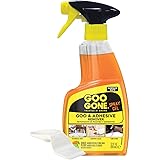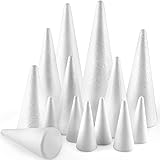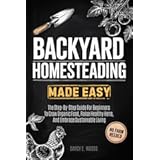Crafting Joy: 27 Creative DIY Toys Your Kids Will Love
Recent research indicates that children engaged in open-ended, creative play demonstrate significantly enhanced problem-solving abilities and a greater capacity for imaginative thinking. Furthermore, crafting together strengthens family bonds and fosters a sense of accomplishment in both children and parents. The video above provides a wonderful visual journey through 27 ingenious DIY toys you can fashion for your little ones, transforming everyday items into extraordinary playthings.
While the visual demonstrations inspire immediate action, understanding the profound benefits and practical considerations behind making homemade toys can further empower your creative endeavors. This article delves deeper into the world of DIY toys for kids, offering insights into why they are invaluable, what materials to consider, and crucial safety tips to ensure hours of joyful, secure play.
The Undeniable Appeal: Why Choose Homemade Toys?
Opting for DIY toys offers a treasure trove of advantages that extend far beyond simple entertainment. These handcrafted creations serve as powerful tools for development, bonding, and sustainable living, providing a richer experience than many store-bought alternatives.
Fostering Creativity and Imagination
Unlike commercial toys that often dictate specific play patterns, homemade toys, much like a blank canvas, invite children to invent their own narratives. A simple cardboard box, for instance, transforms into a rocket ship, a castle, or a car, depending entirely on the child’s imaginative prowess. This open-ended nature encourages children to think outside the box, develop unique storylines, and exercise their creative muscles. Consequently, they learn to adapt and innovate with available resources.
Significant Cost Savings
Parents frequently encounter the sticker shock associated with modern children’s toys. The allure of elaborate packaging often belies the simple joy a child can find in a self-made item. By utilizing materials readily available around the house or inexpensive craft supplies, families can dramatically reduce their toy budget. This practice allows for a more sustainable approach to play, proving that joy does not necessitate a high price tag.
Strengthening Parent-Child Bonds
The process of creating homemade toys together is an enriching activity in itself. It provides dedicated, quality time for parents and children to collaborate, communicate, and share a common goal. This shared experience, much like building a sandcastle together, creates lasting memories and strengthens emotional connections. A child cherishes a toy far more deeply when they have invested their own effort and creativity into its making.
Promoting Sustainable Living
In an age of environmental consciousness, DIY toys offer an excellent opportunity to teach children about sustainability and resourcefulness. Repurposing items like cardboard tubes, plastic bottles, or old fabric scraps reduces waste and instills an understanding of recycling from an early age. This approach transforms potential trash into artistic treasures, demonstrating a tangible positive impact on the environment.
Enhancing Developmental Skills
Beyond imagination, the creation and play with DIY toys stimulate various developmental skills. Fine motor skills are honed through cutting, gluing, and painting. Problem-solving abilities emerge as children figure out how components fit together. Furthermore, tactile experiences with different textures and shapes contribute to sensory development, offering a rich learning environment.
Your DIY Toy Toolbox: Essential Materials
One of the most exciting aspects of making homemade toys is the vast array of materials at your fingertips. Many items that might otherwise end up in the recycling bin or trash can find a new life as part of a cherished plaything.
Household Recyclables
- **Cardboard Boxes:** The ultimate versatile material. Transform them into forts, cars, puppet theaters, or robot costumes.
- **Paper Towel/Toilet Paper Rolls:** Excellent for binoculars, tunnels, or crafting creatures.
- **Plastic Bottles/Containers:** Suitable for shakers, water play items, or building blocks (ensure clean and safe edges).
- **Egg Cartons:** Perfect for sorting games, animal crafts, or miniature planters.
- **Old Socks/Fabric Scraps:** Ideal for making puppets, soft balls, or stuffing for plush toys.
- **Newspaper/Magazines:** Use for papier-mâché, collages, or creating paper airplanes.
Basic Craft Supplies
- **Glue (Non-Toxic):** Essential for assembling components.
- **Scissors (Kid-Safe & Adult):** For cutting various materials.
- **Paints/Markers (Washable, Non-Toxic):** To add color and detail.
- **Yarn/String/Ribbon:** For hanging, tying, or adding decorative elements.
- **Pom-Poms, Googly Eyes, Pipe Cleaners:** For adding personality and texture.
- **Felt/Foam Sheets:** Easy to cut and versatile for various crafts.
Natural Elements
Do not overlook the beauty and versatility of nature’s offerings. Smooth stones, sticks, pinecones, and leaves can be incorporated into sensory bins, nature collages, or used as props in imaginative play scenarios. These elements connect children to the natural world and provide unique tactile experiences.
Safety First: Essential Considerations for DIY Toys
When creating homemade toys, safety must always be paramount. A toy, no matter how creative, loses its value if it poses a risk to a child. Therefore, thoughtful planning and careful execution are critical components of the crafting process.
Non-Toxic Materials
Ensure that all paints, glues, markers, and other decorative elements are clearly labeled as non-toxic and child-safe. Young children, especially, have a tendency to put objects in their mouths. Just as one would carefully select ingredients for a meal, meticulously check the safety of your craft supplies.
Age-Appropriate Design
Consider the age and developmental stage of the child for whom the toy is intended. Avoid small parts that could be a choking hazard for infants and toddlers. Ensure that any strings or cords are short enough to prevent entanglement. Much like a carefully constructed bridge, the design must support the intended user’s safety.
Durability and Sturdiness
Homemade toys should be robust enough to withstand enthusiastic play. Securely attach all components to prevent them from breaking off and creating hazards. Check for sharp edges, splinters, or weak points that could cause injury. Regular inspection of homemade toys ensures their continued safety and longevity.
Cleanliness and Hygiene
Utilize clean materials, especially when repurposing items. Thoroughly wash plastic containers or fabric scraps before transforming them into toys. Furthermore, consider how easy the finished toy will be to clean, especially if it will be handled frequently by small children.
Categories of Play: Inspiring Ideas for Every Child
The world of homemade toys is incredibly diverse, offering opportunities to create items that cater to various types of play and developmental needs. From stimulating the senses to encouraging physical activity, your creations can address multiple facets of a child’s growth.
Sensory Exploration Toys
Sensory toys engage a child’s senses, promoting cognitive development and calming effects. A simple shaker made from a plastic bottle filled with rice or beans, securely sealed, provides auditory stimulation. Similarly, a textured board featuring various fabrics, sponges, and sandpaper offers a rich tactile experience. These are like mini-laboratories for discovery.
Imaginative Play Props
These toys fuel storytelling and role-playing. A set of felt food items can transform a play kitchen into a bustling restaurant. Cardboard box cars become vehicles for epic adventures, while homemade puppets open the door to dramatic storytelling. Such props act as gateways to fantastical worlds, limited only by a child’s imagination.
Active and Gross Motor Toys
Encourage movement and physical development with DIY toys. Bean bags for tossing games, a soft ball made from old socks, or even a simple tunnel fashioned from large cardboard boxes promote gross motor skills and coordination. These toys are not just objects; they are invitations to move and explore.
Educational and Problem-Solving Toys
Craft toys that subtly teach new concepts. A homemade matching game using pictures cut from magazines, an alphabet puzzle made from cardboard, or sorting trays for colors and shapes all offer valuable learning opportunities. These are the building blocks of early education, presented in an engaging, hands-on format.
Tips for Crafting Success with DIY Toys
Embarking on a homemade toy project can be a rewarding experience for the entire family. To ensure maximum enjoyment and successful outcomes, consider these practical tips, which serve as your compass in the world of creative crafting.
Involve Your Children
Whenever appropriate and safe, invite your children to participate in the making process. Their input not only makes the toy more personalized but also gives them a sense of ownership and pride. This collaborative effort, much like a shared adventure, deepens their appreciation for the finished product.
Start Simple, Then Expand
Do not feel pressured to create elaborate masterpieces right away. Begin with simple projects that utilize few materials and basic steps. As your confidence grows and your children become more engaged, you can gradually tackle more complex designs. Building skill, much like stacking blocks, is a gradual process.
Embrace Imperfection
Homemade toys are characterized by their unique, often quirky charm. Do not strive for perfection; instead, celebrate the handmade quality and the individuality of each creation. Children often cherish a slightly lopsided creature or a wobbly car more than a factory-produced item because it carries the imprint of love and effort.
Prioritize Function Over Form
The primary goal of a toy is to provide joy and stimulate play. While aesthetics are pleasant, the toy’s ability to engage a child’s imagination and withstand play is far more important. A simple, functional toy that sparks endless adventures is always superior to a beautiful but unused item.
The possibilities for creating engaging, enriching, and budget-friendly DIY toys are truly limitless. By embracing common household items and a dash of imagination, you can provide your children with playthings that foster development, strengthen family bonds, and inspire a lifelong love for creativity and resourceful living.







